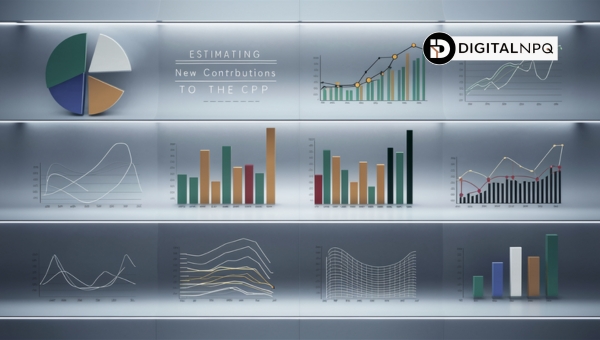Big Changes in CPP 2024: What You Need to Know

The Canadian Pension Plan (CPP) is undergoing significant updates in 2024, bringing big changes in CPP 2024 that will impact employees, employers, and self-employed individuals. This article delves into the new contribution calculations, cost-of-living increases, and what these shifts mean for various stakeholders.
By understanding these enhancements, you can better navigate your financial future and retirement planning. Join us as we explore the key updates, their implications, and how to prepare for these changes effectively.
Overview of Big Changes in CPP
The Canadian Pension Plan (CPP) is set to undergo some big changes in 2024. These enhancements aim to improve retirement security for all Canadians. The updates include a two-tier contribution system, higher earnings thresholds, and increased benefits for retirees.

Understanding these key changes will help individuals and businesses to better plan and adapt. Let’s delve into the major changes coming to the CPP in 2024.
Major Changes in CPP for 2024
The main changes to the Canadian Pension Plan for 2024 include:
- Increase in YMPE: The YMPE will rise from $66,600 to $68,500.
- Introduction of YAMPE: A new tier called YAMPE will be set at $73,200.
- Additional Contributions: Earnings between $68,500 and $73,200 will be subject to an extra 4% CPP contribution from both employees and employers.
- Higher Contribution Limits: This means more of your earnings will be subject to CPP contributions, which could result in higher benefits upon retirement.
- Enhanced Benefits: Retirees will see an increase in their benefits, which is crucial for maintaining their standard of living.
These changes are designed to provide better financial stability for Canadians during their retirement years. By understanding these updates, you can better navigate the new landscape of the CPP.
Impact on Different Stakeholders
The adjustments to the Canadian Pension Plan (CPP) for 2024 come with significant implications for various groups, including employees, employers, and self-employed individuals. Understanding these impacts is crucial for effective financial planning and adaptation.

Effects on Employees
The changes to CPP will affect employees in several ways:
- Increased Contributions: Employees earning above the Year’s Maximum Pensionable Earnings (YMPE) will need to contribute more due to the new tiers.
- Retirement Planning: With increased contributions, employees might need to adjust their retirement savings strategies.
- Higher Benefits: Ultimately, the changes aim to provide higher benefits upon retirement, enhancing financial security.
Effects on Employers
Employers will also face new challenges and adjustments:
- Matching Contributions: Employers must match the increased contributions required from employees, impacting payroll budgets.
- Payroll Adjustments: Businesses may need to update their payroll systems to accurately reflect the new contribution rates and thresholds.
- Financial Planning: Companies might need to revisit their financial plans to accommodate these changes and ensure compliance with the new regulations.
Effects on Self-Employed Individuals
Self-employed individuals will experience the most significant impact from the CPP changes:
- Dual Contribution Responsibility: Unlike employees, self-employed individuals must cover both the employee and employer portions of CPP contributions, leading to a higher total contribution.
- Increased Contribution Rates: Self-employed individuals will contribute 11.9% on earnings up to the YMPE and 8% on earnings between the YMPE and the Year’s Additional Maximum Pensionable Earnings (YAMPE).
- Higher Maximum Contributions: The new structure means the maximum contribution will increase, affecting cash flow and requiring careful financial planning.
- Retirement Benefits: While the increased contributions may strain current finances, they are designed to provide higher retirement benefits, promoting long-term financial security.
- Cash Flow Management: Self-employed individuals will need to manage their cash flow more effectively to accommodate the higher contributions, possibly requiring adjustments to their business operations or personal finances.
- Strategic Planning: It is essential for self-employed individuals to engage in strategic planning to mitigate the impact of these changes. This might involve consulting with financial advisors, revisiting business models, or finding ways to increase income to cover the higher contributions.
By understanding these impacts, stakeholders can better prepare for the changes and make informed decisions to navigate the new CPP landscape effectively.
Also Read: CPP Payment Dates: Your Essential 2024 Guide
Estimating New Contributions to the CPP
Understanding the new CPP contributions for 2024 is essential for both employees and self-employed individuals. With the updated contribution rates and thresholds, it’s crucial to know how to calculate your contributions accurately. Below, we’ll provide detailed guidelines to help you navigate these changes smoothly.

Guidelines for Employees
Employees need to be aware of the new contribution rates and how they affect their earnings. Here are some key points to help you calculate your new CPP contributions:
- Contribution Rate: Employees will contribute 5.95% on earnings up to the Year’s Maximum Pensionable Earnings (YMPE), which is $68,500 for 2024.
- Additional Contributions: For earnings between $68,500 and $73,200, an additional 4% contribution is required.
- Exemption: The first $3,500 of your earnings are exempt from CPP contributions.
- Calculation Example: If you earn $70,000 in 2024, you will contribute 5.95% on $68,500 and 4% on the remaining $1,500.
- Tracking: Make sure to regularly check your pay stubs to ensure accurate deductions.
Guidelines for Self-Employed Individuals
Self-employed individuals have a unique situation as they must cover both the employee and employer portions of CPP contributions. Here’s how you can calculate your contributions:
- Total Contribution Rate: You will contribute a total of 11.9% on earnings up to the YMPE of $68,500.
- Additional Contributions: For earnings between $68,500 and $73,200, you need to contribute an additional 8%.
- Exemption: Like employees, the first $3,500 of your earnings are exempt from CPP contributions.
- Calculation Example: If you earn $70,000, you will contribute 11.9% on $68,500 and 8% on the remaining $1,500.
- Budgeting: Plan your finances to accommodate these higher contributions, ensuring you have enough cash flow for your business needs.
Understanding these guidelines will help you accurately calculate your CPP contributions and plan your finances effectively for 2024.
Recognizing the Canadian Pension Plan’s Cost of Living Increase
The cost of living increase in the Canadian Pension Plan (CPP) for 2024 is designed to help retirees maintain their purchasing power. With the rising cost of essential goods and services, this adjustment aims to ensure that CPP benefits keep pace with inflation. By examining the reasons behind this increase and its effects on beneficiaries, we can better understand the significance of these changes.
Rationale Behind the Increase
The primary reasons for the cost-of-living adjustment in CPP are:
- Inflation: As prices for goods and services rise, the purchasing power of money decreases. Adjusting CPP ensures that retirees can still afford their daily needs.
- Maintaining Standard of Living: The increase helps retirees keep their standard of living consistent, even as costs rise.
- Government Policy: These adjustments are part of a broader strategy to provide financial security for the aging population.
Impact on Beneficiaries
The cost-of-living increase in CPP will have several impacts on beneficiaries:
- Higher Monthly Payments: Beneficiaries will see a rise in their monthly CPP payouts, which helps them cope with inflation.
- Improved Financial Security: The increase provides a buffer against the rising cost of living, offering more financial stability.
- Long-Term Benefits: Future retirees also benefit as the adjustments ensure that their pension keeps up with economic changes.
By understanding these elements, individuals can better plan for their retirement and make informed financial decisions.
Also Read: Universal Credit Payment: Unlock Maximum Benefits Today!
Preparing for the Changes
As the Canadian Pension Plan (CPP) undergoes significant updates in 2024, businesses and individuals must prepare to adapt. This involves updating payroll systems and ensuring compliance with Canada Revenue Agency (CRA) regulations. Understanding these steps is crucial for a smooth transition.
Updating Payroll Systems
Businesses need to take several steps to update their payroll systems in light of the CPP changes:
- Review New Contribution Rates: Ensure that the new contribution rates are accurately reflected in your payroll software.
- Adjust Earnings Thresholds: Update the Year’s Maximum Pensionable Earnings (YMPE) and Year’s Additional Maximum Pensionable Earnings (YAMPE) in your system.
- Software Update: If using third-party payroll software, check for updates or patches from the provider.
- Training Staff: Train payroll staff on the new changes so they can process payroll accurately.
- Test the System: Run tests to verify that the new settings work correctly before the changes take effect.
Ensuring CRA Compliance
To comply with CRA regulations following the CPP updates, several measures need to be taken:
- Stay Informed: Regularly check CRA updates and guidelines to stay current with any changes or additional requirements.
- Accurate Record-Keeping: Maintain detailed records of all contributions and adjustments to ensure accurate reporting.
- Timely Remittances: Ensure that all CPP contributions are remitted on time to avoid penalties.
- Consult Professionals: Seek advice from tax professionals or accountants to ensure all compliance measures are met.
- Audit Readiness: Be prepared for potential audits by keeping all documentation organized and accessible.
By taking these steps, businesses can ensure they are well-prepared for the upcoming CPP changes and maintain compliance with CRA regulations.
Conclusion
The upcoming changes in CPP for 2024 bring significant updates that will impact employees, employers, and self-employed individuals. Understanding these changes is crucial for effective financial planning and ensuring compliance with new regulations. By staying informed, all stakeholders can better navigate the transition and make the most of the enhanced benefits.
Stay updated with more insightful articles on our site to keep you informed about the latest developments. Don’t miss out on valuable information—read more blogs today!
